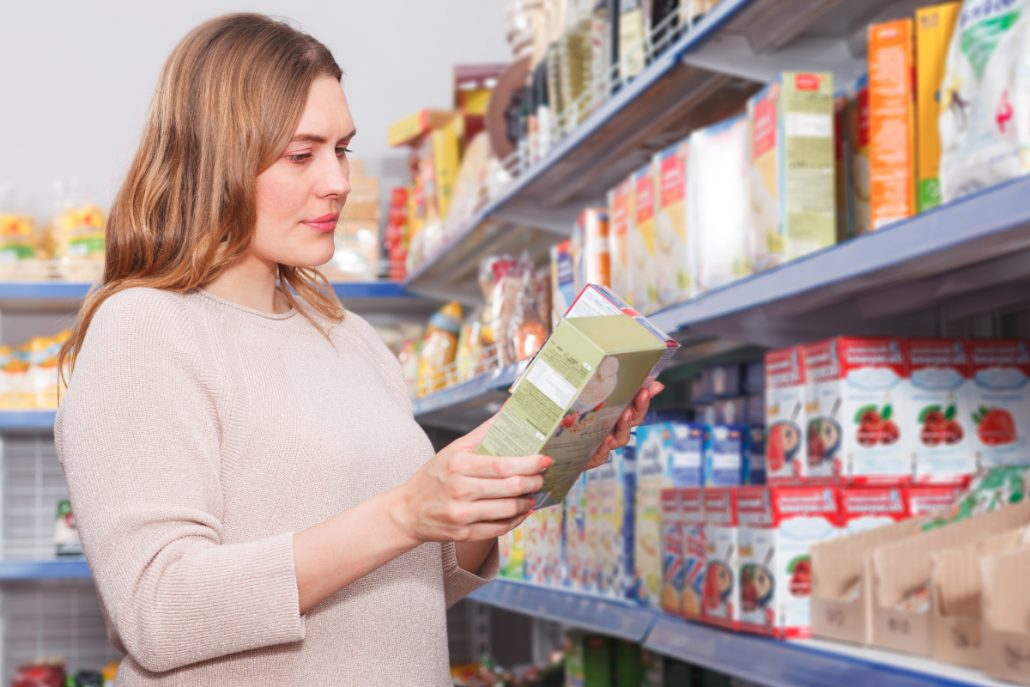Get instant access to cutting edge Nutrition, Fitness and Health tips and YES even Healthy Recipes.

Reading food labels can be a tricky endeavor, even for the most health-conscious consumer.
Food manufacturers convince people to buy highly processed and unhealthy products by using misleading words on their packaging.
In this piece I will break-down what to look for and what to discard on food labels so that you can differentiate between mislabeled junk and truly healthy foods.
One of the best tips may be to completely ignore claims on the front of the packaging.
Front labels try to lure you into purchasing products by making health claims.
In fact, research shows that adding health claims to front labels makes people believe a product is healthier than the same product that doesn’t list health claims — thus affecting consumer choices. (1, 2, 3, 4)
Manufacturers are often dishonest in the way they use these labels. They tend to use health claims that are misleading and, in some cases, downright false.
Examples include many high-sugar breakfast cereals like whole-grain Cocoa Puffs. Despite what the label may imply, these products are not healthy.
This makes it hard for consumers to choose healthy options without a thorough inspection of the ingredients list.
Product ingredients are listed in descending order — from highest to lowest amount.
This means that the first ingredient is what the manufacturer used the most of.
A good rule of thumb is to scan the first three ingredients, as they make up the largest part of what you’re eating.
If the first ingredients include refined grains, a type of sugar, or hydrogenated oils, you can assume that the product is unhealthy.
Instead, try choosing items that have whole foods listed as the first three ingredients.
In addition, an ingredients list that is longer than two to three lines suggests that the product is highly processed.
Nutrition labels state how many calories and nutrients are in a standard amount of the product — often a suggested single serving.
However, these serving sizes are frequently much smaller than what people consume in one sitting.
For example, one serving may be half a can of soda, a quarter of a cookie, half a chocolate bar, or a single biscuit.
In doing so, manufacturers try to deceive consumers into thinking that the food has fewer calories and less sugar.
Many people are unaware of this serving size scheme, assuming that the entire container is a single serving, when in truth it may consist of two, three, or more servings.
If you’re interested in knowing the nutritional value of what you’re eating, you need to multiply the serving given on the back by the number of servings you consumed.
Health claims on packaged food are designed to catch your attention and convince you that the product is healthy.
Here are some of the most common claims — and what they mean:
Despite these cautionary words, many truly healthy foods are organic, whole grain, or natural. Still, just because a label makes certain claims, doesn’t guarantee that it’s a healthy options.
Sugar goes by countless names — many of which you may not recognize.
Food manufacturers use this to their advantage by purposely adding many different types of sugar to their products to hide the actual amount.
In doing so, they can list a healthier ingredient at the top, mentioning sugar further down. So, even though a product may be loaded with sugar, it doesn’t necessarily appear as one of the first three ingredients.
To avoid accidentally consuming a lot of sugar, watch out for the following names of sugar in ingredient lists:
Many more names for sugar exist, but these are the most common.
If you see any of these in the top spots on the ingredient’s lists — or several kinds throughout the list — then the product is high in added sugar.
The best way to avoid being misled by product labels is to avoid processed foods altogether. After all, whole food doesn’t need an ingredients list.
Still, if you decide to buy packaged foods, be sure to sort out the junk from the higher-quality products with the helpful tips in this article.

Get instant access to cutting edge Nutrition, Fitness and Health tips and YES even Healthy Recipes.
